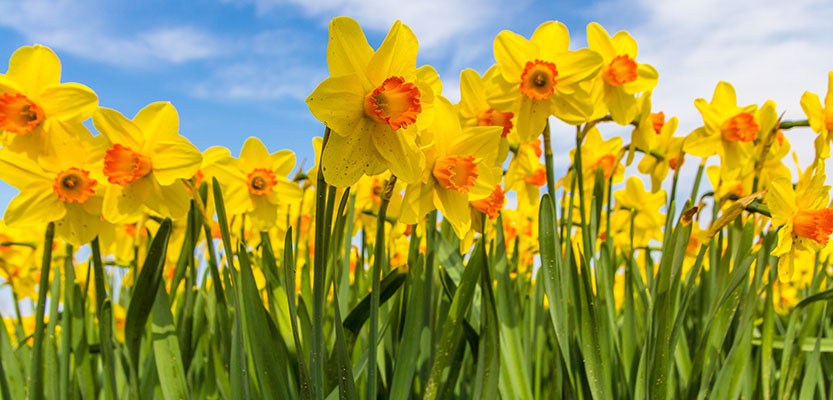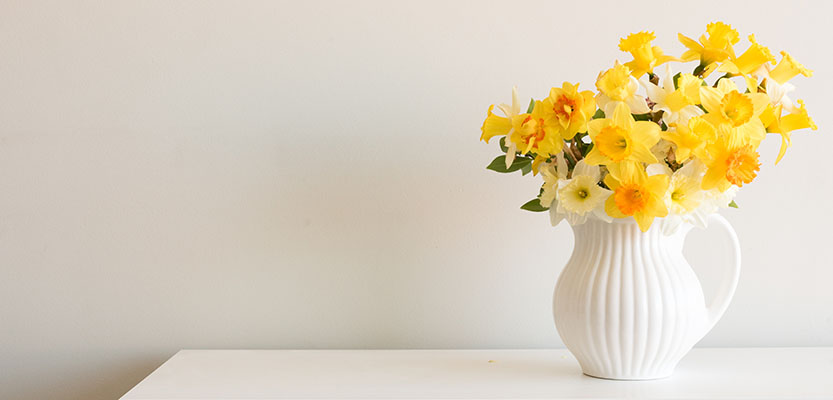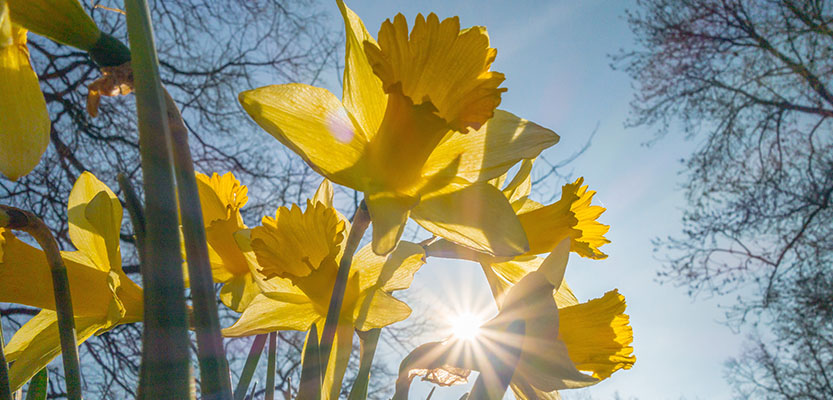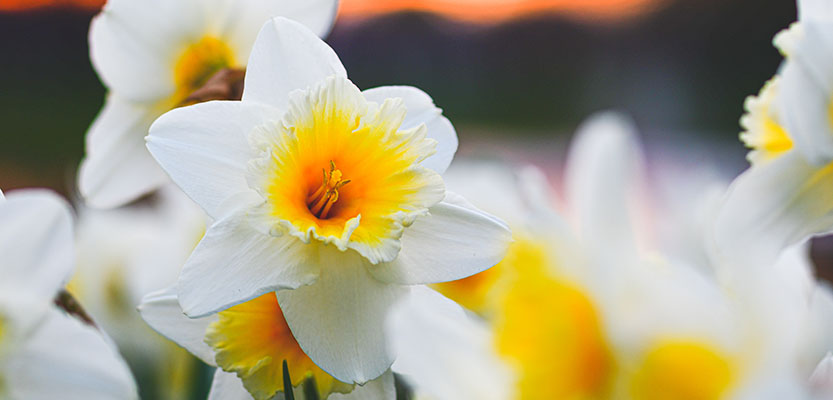Common Names:
- Daffodil
- Narcissus
- Jonquil
Scientific Name:
- Narcissus spp.
Family & Genus:
- Family: Amaryllidaceae
- Genus: Narcissus
Description:

Daffodils are known for their bright, trumpet-shaped blooms surrounded by six petal-like tepals. The flowers typically come in shades of yellow, white, and orange, though some cultivars feature pink or green accents. Their upright stems and slender, strap-like leaves give them a striking appearance in gardens or arrangements. Daffodils can range from small, delicate varieties to larger, showy hybrids. They are one of the first flowers to bloom in spring, signaling the end of winter.
Habitat & Origin:
Native to Europe and North Africa, Daffodils are most commonly associated with meadows, woodlands, and rocky slopes. They thrive in temperate climates, preferring well-drained soil and sunny or partially shaded locations. Their bulbs naturalize easily, spreading year after year.
Symbolism & Meaning:
- Rebirth and Renewal: As a herald of spring, daffodils symbolize new beginnings and hope.
- Unrequited Love: Linked to the Greek myth of Narcissus, they are also associated with vanity or self-love.
- Prosperity and Good Fortune: In Chinese culture, daffodils are a symbol of wealth and good luck, especially during the Lunar New Year.
- Friendship: Daffodils are often given as a gesture of goodwill and friendship.
Uses:

- Ornamental: Daffodils are popular in gardens, parks, and naturalized landscapes for their vibrant colors and hardy nature.
- Cut Flowers: Though beautiful in bouquets, their stems release a sap that can harm other flowers; they should be conditioned separately before being combined in arrangements.
- Medicinal: Some daffodil species contain compounds used in traditional medicine and modern pharmaceuticals, though their bulbs are toxic if ingested.
Flower Care:

To enjoy daffodils in arrangements:
- Cut stems diagonally and place them in water alone for 24 hours to neutralize their sap.
- Change the water frequently to maintain freshness.
- Keep them away from direct sunlight and heat to prolong their life.
Flowering Season:

Daffodils bloom in early to mid-spring, depending on the variety and climate. Some late-blooming varieties can flower into early summer.
Varieties & Hybrids:
- Trumpet Daffodils: Feature a long central trumpet and large petals, classic in appearance.
- Double Daffodils: Have layered, ruffled petals, creating a full, dramatic bloom.
- Jonquils (Narcissus jonquilla): Smaller flowers with a sweet fragrance and multiple blooms per stem.
- Miniature Daffodils: Compact varieties ideal for rock gardens or containers.
- Split-Corona Daffodils: Petals appear split or ruffled for a unique look.
Interesting Facts:
- The name “Narcissus” comes from the Greek myth of a handsome youth who fell in love with his own reflection.
- Daffodils are the national flower of Wales and are worn on St. David’s Day (March 1).
- They are the birth flower for March, symbolizing new beginnings.
- All parts of the daffodil plant are toxic to humans and animals if ingested, so they must be handled with care in gardens with pets or children.









